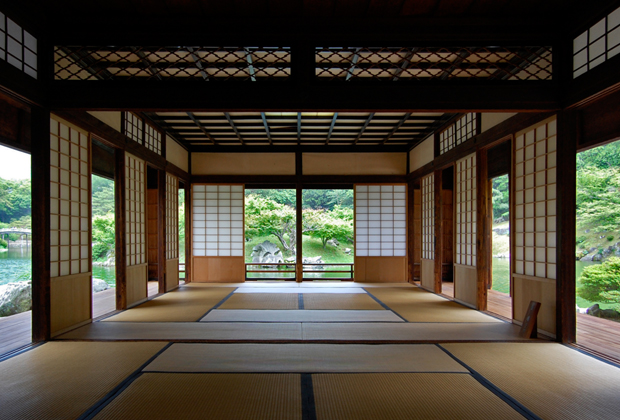Chances are, you enjoy a sunny spot at the windowsill, a crackling fire, a lush pocket garden, a richly patterned rug, or a cascading water fountain. These might seem like indulgences, elements you desire but find no justification for purchasing for your office, demanding in your child’s school or expecting in your hospital room. However, growing evidence from psychology and neuroscience would challenge your quick dismissal.
What is biophilia?
The practice of incorporating nature and natural elements into the built environment – known as biophilic design – has been proven to measurably reduce stress, enhance cognitive function and creativity, and expedite healing. And this translates to increased productivity, healthcare cost savings, and reduced turnover.
Biophilic design, however, must be implemented correctly to optimize health benefits and potential monetary savings. Not all interactions with nature provide restorative, stimulating experiences for humans; in fact, some nature interactions can even induce stress or fear responses. Fortunately, an emerging number of studies teach us which specific interactions with nature are restorative and which are stressful. Understanding how people viscerally respond to nature and how such beneficial experiences can be supported in urban settings is essential to shaping a healthy and vibrant society.

14 Patterns of Biophilic Design” publication by Terrapin Bright Green
In an effort to define what constitutes good biophilic design, our consulting firm, Terrapin Bright Green, has distilled research from a number of fields, including environmental psychology, endocrinology and neuroscience, to develop the 14 Patterns of Biophilic Design. These patterns serve as guidelines for applying biophilic design to both interior and exterior environments and are adaptable to just about any design project.
The 14 patterns of biophilic design
The 14 patterns are organized into three broad categories. “Nature in the Space” patterns entail direct contact with nature or natural systems. “Natural Analogues” patterns relate to representations and abstractions of nature. “Nature of the Space” patterns are spatial conditions derived from nature.
Nature in the Space
- Visual Connection with Nature
- Non-Visual Connection with Nature
- Non-Rhythmic Sensory Stimuli
- Thermal & Airflow Variability
- Presence of Water
- Dynamic & Diffuse Light
- Connection with Natural Systems
Natural Analogues
- Biomorphic Forms & Patterns
- Material Connection with Nature
- Complexity & Order
Nature of the Space
- Prospect
- Refuge
- Mystery
- Risk/Peril
Each of these patterns can be implemented in spaces of many scales, contexts and climates to elicit positive health responses. Some patterns can be applied fairly intuitively, whereas others require more careful planning. The most successful biophilic spaces tend to employ more than one pattern for maximum impact. For instance, prospect and refuge pair nicely to create protected viewing conditions. Each of these patterns will be discussed in detail in an on-going series of articles. Today, we start with pattern one.

Kikugetu-tei in Takamatsu, Japan is an excellent example of Visual Connection with Nature pattern, Image copyright wakiii/Flickr
Pattern 1: Visual connection with nature
“Visual Connection with Nature,” the first pattern nested within “Nature in the Space,” is relatively simple to implement. Spaces exhibiting this pattern have a view to nature, natural systems or living elements. This pattern evolved from the many studies on visual preference and responses to views to nature that demonstrated reduced stress, increased positive emotional functioning, improved concentration, and expedited healing rates. Biederman & Vessel in their 2006 study demonstrated that people prefer viewing a natural scene over a man-made environment, and viewing a natural scene repeatedly does not significantly diminish in pleasure over time (ie. a natural view doesn’t bore you as quickly as a man-made view).
An excellent case study displaying the potency of Visual Connection is the Sacramento Municipal Utility District’s LEED Gold certified call center in California. Lisa Heschong found that all the employees had great access to daylight, but because the workstations were perpendicular to the window employees had to move their chairs to see the view to the trees outside. When the workstations were re positioned at an angle such that employees could see the trees in their peripheral vision, the $1,000 investment led to a 6% gain in call handling efficiency, or a $2,990 return (i.e., 299% ROI).
Implementing biophilic design strategies, such as for Visual Connection with Nature, doesn’t have to be complex or expensive. Aquariums, potted plants, green walls, views to gardens and distant landscapes, and artwork of natural scenes all satisfy Visual Connection. Strategic and mindful design that (re)connects humans with nature does not just improve the habitability of spaces – it transforms them into rejuvenating, inspiring places that support enhanced health, productivity and learning for all. Biophilic design should be a core strategy for any designer, planner or business endeavoring to make people – and the planet – more healthy, happy and whole.